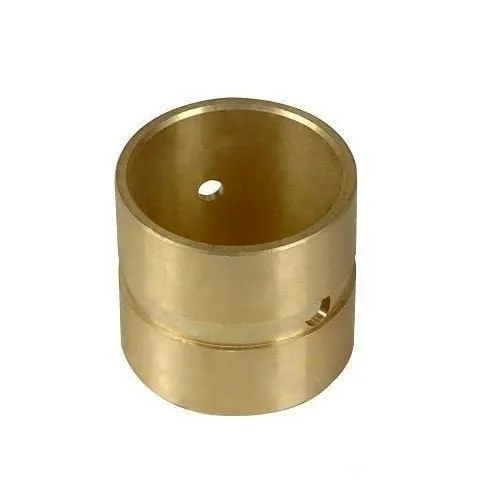Product Name: King Pin Bush: Your Ultimate Guide to Sizes, Applications, and More
Introduction: When it comes to the smooth operation of heavy-duty vehicles, the role of a seemingly small component like the King Pin Bush cannot be underestimated. Manufacturers, exporters, and suppliers of this essential automotive part play a pivotal role in ensuring the reliability and safety of vehicles on the road. In this comprehensive guide, we will delve into the world of King Pin Bushes, covering everything from standard size charts to applications, brands that use them, alloys, specifications, technical data sheets, and frequently asked questions (FAQs).
Standard Size Chart
King Pin Bushes come in a range of standard sizes to accommodate various types of vehicles. The choice of size depends on factors such as the vehicle’s weight, make, and model. Here’s a standard size chart to give you an idea of the available options:
| Size | Inner Diameter (mm) | Outer Diameter (mm) | Length (mm) |
|---|---|---|---|
| KP-100 | 50 | 60 | 100 |
| KP-120 | 55 | 65 | 120 |
| KP-150 | 60 | 70 | 150 |
| KP-180 | 65 | 75 | 180 |
| KP-200 | 70 | 80 | 200 |
Please note that these sizes are standard, and custom sizes can be manufactured to suit specific requirements.
Applications and Uses
King Pin Bushes are essential components in the suspension systems of heavy vehicles, including trucks, buses, and commercial vehicles. They serve the following key purposes:
- Support and Alignment: King Pin Bushes help support and align the king pin, allowing for smooth and controlled steering.
- Reduced Friction: They reduce friction between the king pin and the axle, preventing wear and tear.
- Vibration Dampening: King Pin Bushes absorb vibrations and shocks, enhancing ride comfort.
- Safety: Properly functioning King Pin Bushes are crucial for vehicle safety and stability, especially during heavy braking and cornering.
Brands Using King Pin Bushes
Leading automotive brands worldwide rely on King Pin Bushes to maintain the performance and safety of their vehicles. Some notable brands include Volvo, Scania, MAN, Mercedes-Benz, and Tata Motors. These brands choose King Pin Bushes for their durability, reliability, and performance.
Alloys and Specifications
King Pin Bushes are typically made from high-quality alloys such as bronze, brass, or steel. The choice of alloy depends on the specific application and requirements. Specifications may vary, but they generally adhere to industry standards and are designed to withstand heavy loads and extreme conditions.
Technical Data Sheet
For detailed technical information about a specific King Pin Bush, you can refer to the manufacturer’s technical data sheet. This sheet typically includes material composition, dimensions, load-bearing capacity, and installation guidelines.
Frequently Asked Questions (FAQs)
Q1. How often should I replace King Pin Bushes?
- Replacement intervals vary based on usage and maintenance, but a general guideline is every 100,000 to 150,000 miles or as recommended by your vehicle manufacturer.
Q2. Can I use aftermarket King Pin Bushes?
- While aftermarket options are available, it’s advisable to use OEM (Original Equipment Manufacturer) or trusted aftermarket brands to ensure quality and safety.
Q3. What are the signs of worn-out King Pin Bushes?
- Common signs include excessive steering play, uneven tire wear, and a rattling or clunking noise when driving.
Q4. Are King Pin Bushes easy to install?
- Proper installation requires technical knowledge and tools. It’s recommended to have them installed by a qualified mechanic.
Conclusion: King Pin Bushes may be small in size, but their significance in ensuring the performance, safety, and longevity of heavy vehicles cannot be overstated. Whether you’re a manufacturer, exporter, supplier, or vehicle owner, understanding their standard sizes, applications, and specifications is essential for maintaining a reliable and efficient fleet on the road. Make informed decisions and prioritize quality when it comes to King Pin Bushes to ensure the smooth operation of your vehicles.


